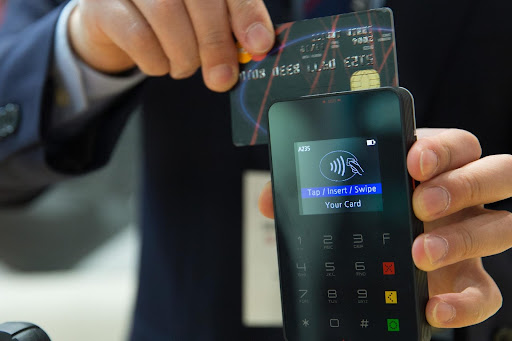How do eCommerce Websites Detect Fraud Transactions?
It’s no lie that eCommerce websites are prone to fraudulent transactions. On average, an eCommerce storefront experience 206,000 attacks in a month. With eCommerce merchants facing this risk, they must protect themselves and their users against malicious fraudsters. In this article, we dive deep into what eCommerce fraud is and how eCommerce websites detect fraudulent transactions.
Ecommerce fraud defined

ECommerce, or electronic/internet commerce in full, is a platform to exchange money and data to transact business through the internet. According to Statista, global retail eCommerce sales were estimated at 5.2 trillion dollars in 2021. This number was projected to increase by 56%, bringing the total to 8.1 trillion dollars by 2025.
With this kind of revenue figures, the eCommerce industry continues to be a hotbed for eCommerce fraud. ECommerce fraud refers to any illegal attempt by scammers to intercept a commercial transaction on an eCommerce storefront with the goal of personal or financial gain.
What are the statistics on eCommerce fraud?
According to a Statista Report:
Loss of revenue from online payment fraud was estimated at 20 billion U.S dollars globally in 2021. A 14% rise from the 17.5 billion dollars recorded in previous years. This rise is attributed to the untimely outbreak of COVID-19, whose isolative nature pushed most people to shop online. This presented an opportunistic leeway for an increase in eCommerce fraudsters.
The fraud detection and prevention market was estimated at 28 billion U.S dollars in 2020, and projections estimate that this figure might rise steadily to 69 billion U.S dollars by 2025 to help curb the rise in ECommerce fraud.
A 2021 study revealed that the card verification number remains the most common fraud detection tool among online merchants worldwide. This method is used by 54% of the total global merchants. This is followed by email verification, whose usage among global merchants stands at 43%, while customer order history came in third at 38%.
Why are fraud detection and prevention important

Fraud detection is a preventive system established by online merchants to help predict and avert future occurrences of suspicious transactions. Most of these systems identify loopholes that fraudsters may use and try to patch them up. Here are some reasons why fraud detection is vital:
Helps predict new fraud attack patterns
Recently, eCommerce fraudsters have found newer and more innovative ways to bypass the systems that protect online eCommerce platforms for their gain. However, fraud detection and prevention advancements leverage machine learning to detect new and ever-changing attack patterns. These preventative systems can use historical data to help make accurate predictive patterns that can help stop a new attack. To stay ahead of these threats, it's essential to understand how does web scraping works, as it allows businesses to gather vast amounts of data from various sources, enriching the machine learning models used for fraud detection. This comprehensive approach helps stay ahead of fraudsters by continuously updating and refining predictive capabilities.
Increases revenue for merchants
For the merchants, the higher the order acceptance rate, the higher their revenue figures. Applying fraud detection and prevention systems can help improve merchants' revenues by improving order acceptance rates.
These systems use artificial intelligence to distinguish a trustable buyer persona from an untrustworthy one, therefore, helping improve the order acceptance rate and, consequently, the storefront’s revenues by reducing chances of charge-backs. Here are other ways to ensure that you run a successful eCommerce shop.
Reduces labor cost in manual order reviews
Automated systems are generally faster compared to manual work. Applying these systems in the fraud detection and prevention process implies that a given amount of work can be done faster using automated systems than human labor. This relieves online merchants of a high labor cost while still upholding the efficiency of artificial intelligence.
Reduces instances of charge-backs
A chargeback happens when a customer contacts their bank to dispute a transaction. The chargeback is submitted, and the transaction value is taken back from the merchant's account if the issuing bank accepts the dispute.
The purpose of chargebacks is to safeguard cardholders against fraud. Good preventative measures can identify and communicate transaction details promptly to prevent chargebacks.
Best practices to detect eCommerce fraud?

Protecting your eCommerce storefront may feel like a daunting task at this point. It should not. There are some great practices that you can apply to help protect your eCommerce storefront from internet fraudsters. Here is a list of them:
Use Shopify protect
What is Shopify Protect? This is Shopify's Fraud Protection technology that classifies transactions as either "protected" or "not protected" to stop fraud from occurring on Shopify. Shopify Protect is a preventative measure to stop fraud by using artificial intelligence to screen orders and eradicate instances of Shopify fraud.
When does a chargeback occur?
- When the consumer did not receive the merchandise.
- In instances when double-billing occurs.
- When there is an incorrect charge.
- In instances of unrecognized purchases.
- In instances where a customer is dissatisfied.
- Upon detection of account takeover fraud.
- In instances of friendly fraud.
Conduct frequent website security audits
Frequent website audits are a good way of staying ahead of eCommerce fraud. A website audit is a full analysis of all the factors that may make your website vulnerable to attacks by eCommerce frauds.
Here is a list of things to check when doing a website audit.
Review suspicious orders
An excellent way to prevent e-commerce fraud is to monitor the order process for a contradiction in shipping and billing addresses. You should also pay close attention to the physical location of your customers. In so doing, you can leverage past patterns to curb future instances of e-commerce fraud.
Comply with PCI guidelines
The PCI Standards Council is responsible for developing the Payment Card Industry Data Security Standard (PCI DSS). This set of requirements ensures that all companies that process, store, or transmit credit card information maintain a secure environment. PCI DSS has 12 essential requirements, 78 base requirements, and 400 test procedures to ensure that organizations are PCI compliant.
Use verification software
Verification software ensures that customer addresses and email data from buyers buying from any eCommerce store are recorded correctly. This is done in a bid to curb any instances of attempted fraud. This software also seeks to make the eCommerce buyer's process as seamless as possible while refining a buyer profile that can be used in future fraud detection.
Build a block list
A block list or a black list is a list of identified buyers whose behavior and patterns have shown intent of defrauding a merchant. A merchant creates this list as a future preventative measure against fraud from suspicious buyers.
Limit order quantities
Limiting order quantities as an online merchant is a vital step in ensuring the sustainability of revenues. Maximum order quantities are often employed whenever there is a promotional sale. This reduces the chances of wholesalers buying the product in bulk at a lower price and reselling it at a higher price.
Minimum order quantities, on the other hand, help online merchants maintain a given profit margin. This often happens when selling a single product unit may not be profitable to the merchant.
Have Policies That Don't Tolerate Fraud
Ideally, this refers to laws and regulations protecting online merchants against eCommerce fraud. While the course of action against fraudsters may differ based on different online merchants. The main aim is to serve penance for anyone who violates the set rules.
Use address verification service
ECommerce merchants must be able to verify their buyer's shipping addresses. This is done by leveraging shipping information from shipping companies to verify customer addresses. This mainly helps in identifying and curbing friendly fraud.
Types of eCommerce fraud

ECommerce fraud refers to any illegal attempt by scammers to intercept a commercial transaction on an eCommerce storefront with the goal of personal or financial gain. We have different types of eCommerce fraud based on the way of execution.
Here are some of the types of eCommerce fraud:
Triangulation fraud
Triangulation fraud is a form of eCommerce fraud that involves a scammer creating a fake storefront. An unsuspecting buyer will visit this fake storefront and make an order. The fraudster uses stolen card information to make good on the unsuspecting buyer's order. The fake storefront owner then pockets the money. This form of eCommerce fraud often goes unnoticed, especially since the unsuspecting buyer often gets the goods, they ordered.
Friendly Fraud
Friendly Fraud, often known as Chargeback, is a form of eCommerce fraud where the person orders a commodity from an eCommerce storefront and gets the goods delivered to him. He then disputes the charges to the credit card issuer.
This prompts the credit card issuer to make good on the chargeback claim from the merchant's account. While there may be genuine instances where the goods or services never reached the buyer, goods arrived damaged, or delivery of a wrong consignment. Claiming chargeback for goods or services that were rightfully delivered is what is called Friendly Fraud.
Online Payment Fraud
Online payment fraud is when a person with someone else’s payment information uses it to make illegal or unauthorized transactions. Once the owner of the payment information disputes the transactions, the bank in question or the merchant is made to pay chargeback fees. In some cases, the fraudster himself may have initiated the dispute to be paid chargeback fees.
Account Takeover Fraud
This is an eCommerce fraud method where fraudsters can digitally penetrate a victim's bank account to steal funds or information. A successful attempt at account takeover fraud could lead to unauthorized transactions or eCommerce shopping.
Summing Up
The eCommerce industry is growing in leaps and bounds with each passing year. There is a need to employ newer and more efficient fraud detection and prevention techniques to make the industry safer for customers and merchants.
About the author
Copyright © . All Rights Reserved
